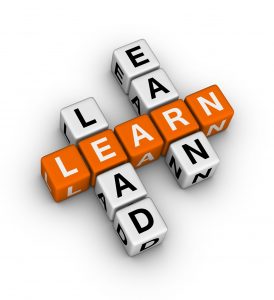Effective CRM training is the key to getting your sales team onboard and off to a fast start, without disrupting their sales efforts.
Lack of user adoption is the #1 killer of CRM rollouts. However, typical training approaches can err on both sides of the equation, too much information as well as not enough.
Common CRM Training Mistakes
Probably the most common mistake made by leadership in rolling out their new CRM especially in  smaller organizations, is lack of structure combined with lack of training. The mistake that leaders make is assuming that the team will invest good faith efforts in learning the new CRM tool. This may be true of new cool tools for account research or other sales and marketing functions but never forget, the CRM is perceived by most sales people as management playing big brother. So, they will use lack of training and slow, inefficient software for their lack of use of the CRM but, as often as not, it’s their own resistance to the concept that is the culprit. If you leave it up to the sales person, some will learn it and some won’t but, most will blame the system when they fail to use it.
smaller organizations, is lack of structure combined with lack of training. The mistake that leaders make is assuming that the team will invest good faith efforts in learning the new CRM tool. This may be true of new cool tools for account research or other sales and marketing functions but never forget, the CRM is perceived by most sales people as management playing big brother. So, they will use lack of training and slow, inefficient software for their lack of use of the CRM but, as often as not, it’s their own resistance to the concept that is the culprit. If you leave it up to the sales person, some will learn it and some won’t but, most will blame the system when they fail to use it.
Conversely, the leadership team and the support staff that were involved in selecting the CRM solution often are very excited about all its capabilities and anxious to rollout the solution to the team so they’ll learn and use all the bells and whistles. But for all the reasons above, the sales people are not as likely to be excited by the technology. Often leadership is misled by a few tech savvy sales people that are very enthusiastic into believing that the entire team will utilize a tremendous amount of the CRM capabilities. And so, the CRM training is a blizzard of bells and whistles, too much information and most of the sales people leave completely overwhelmed.
There is no over estimating the disparity between the appitudes and willingness of individual sales people to adobt and learn CRMs. Countless times I’ve trained entire sales teams in a big banquet room or conference room and seen it happen before my eyes. It seems that no matter the pace and structure of the training, there are always a few team members that begin to get that glazed over look within the first few minutes.
To be clear, this is NOT all the sales person’s fault. We all know folks that just don’t get tech quickly. Often, these people are team players that see the value of the CRM but, just don’t learn technology well in a classroom setting.
In addition to the challenges of training a varied and often resistent team, leadership lacks the experience to see how certain things are aboslutely required of the sales people in order to drive the reporting, analytics and dashboards that management is expecting.
Based on 25 years of experience teaching sales people to use CRMs, I’ve found that the path of least resistance and highest probability of success in CRM training and adoption is this…
Identify Sales Leader Champion

There’s got to be one or more sales people that are going to act as an example to the rest of the team and encourage them. “Hey guys, I did it and it helped me this and that way. You can do it too!” Ideally, these champions are involved in the selection process early on and therefore understand all the trade offs that are wrestled with along the way. They’ll also serve as a reality check as you begin to map out the required input from sales people. What’s realistic to expect? What will really be helpful to the sales person? What will really aggrivate them?
Identify Expected Analytics & Reporting
In the end, the point of the CRM is to manage customers and manage sales people and enable marketing automation, etc. So, management has to decide what analytics and reporting are essential and which are nice to have. Each manager that expects to have a dashboard to help them serve clients and manage their team should spell out exactly what is on that dashboard early on, ideally prior to the selection process. “I want to see how many customer service issues we have each week.” is not quite good enough. You have to spell out exactly what defines a customer service issue. Does it include a customer calling in to change their bililng address? What about calling to praise a team member?
Map Analytics to Bare Minimum Sales Input
With all the required analytics mapped out, then you’ll know exactly what information has to be input in the CRM by each user. Users have to be trained to know that changing the billing address is officially a “customer support” case but, praising a team member is not. Sales people need to be trained that calling a customer and having an actual conversation with the customer should be logged as an official “sales call”. Dialing the phone, getting the secretary and asking how her weekend was is not an official “sales call”… or maybe it is for you. Either way, your dashboard is worthless if you don’t know what sales people are calling a sales call. In addition, marketing may feel it would useful to be able to segment prospects and customers based on several very specific pieces of data about their company. Each of these items need to be collected by the sales people consistently or marketing’s segmenting and targeting objectives can’t be met. Is it reasonable to ask sales people to obtain all of this information in all cases? Is it onnerous to ask them to document it all after every sales call?
Build a Focused CRM Training Program
The CRM training for the sales people should focus only on the data entry that is essential to driving the analytics and reporting that are required by management and marketing. Get very specific and very clear about exactly how to enter each piece of information and play out real world scenarios so that sales people can be confident about how to make judgement calls. After a sales presentation, which fields have to be updated? What are the scenarios that apply to each value in each field? What is expected in terms of documenting deal size, follow up tasks, etc.?
The intial CRM training should be very focused and limited. This avoids the overwhelmed, glazed over feeling by being very clear and very specific and providing lots of examples and practice. Managers and marketers will be frustrated by this process. They’ll see it as underutilization of the CRM solution. But, be patient! The greatest risk is that the CRM investment will be a complete wash because the sales team didn’t adopt it consistently. Take this diliberate approach and when you and the sales team feel you’re ready for it, add new requirements for the sales people that provide greater value for management and the company. But do it carefully in small bites.